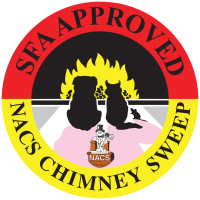Wood and smokeless Fuel
It is essential that firewood is properly dried before it is burnt. Wood should ideally contain less than 20% moisture. Kiln-dried wood should have a moisture level of between 8% and 20%
Burning wet and unseasoned wood generates less heat for your home, because more heat is expended on turning the moisture into water vapour and sending it up the chimney. It also leads to the build-up of deposits of tar and creosote on the inside of the flue or chimney.
These deposits are hard to remove: normal brushing will not remove them. A large build-up of tar and creosote can lead to a chimney fire.

